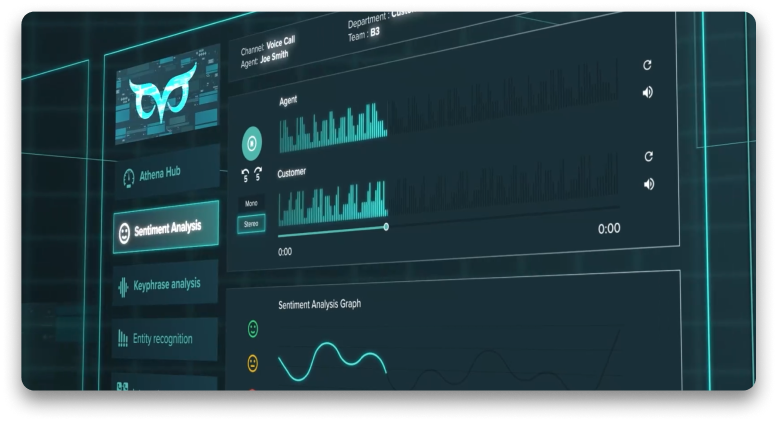Customer Interaction Management System
In today’s competitive business landscape, fostering robust customer relationships is paramount, and the right Customer Interaction Management System (CIM System) can be an invaluable tool for this purpose. A Customer Interaction Management system automates and streamlines business-customer interactions across channels like phone, email, and social media. It’s vital for Workforce Management, providing visibility into agent-customer interactions, and aims to boost customer satisfaction and business performance.
Businesses recognize that the customer experience extends beyond a single transaction—it’s an ongoing effort to continually improve. Going above and beyond for customers fosters loyalty and satisfaction, regardless of the reason for their interaction, whether it’s for marketing, sales, or customer service.
Different types of interactions can occur in contact centers, including telephone calls, emails, web chats, video calls, and various other mediums used for customer interactions. When a customer reaches out to your organization, it signifies an interaction between the parties, and this interaction can take place through different channels depending on the contact center’s capabilities and technology.
Through the adoption of Customer Interaction Management System, businesses can ensure that each customer interaction is meaningful, enhancing engagement, increasing retention rates, and driving business growth. This article will explore Customer Interaction Management Systems, their components, and their significant impact on business relationships.
But to begin, let’s start with the basics: what makes a Customer Interaction Management System?
What is a Customer Interaction Management System?
In a previous article, we have defined Customer Interaction Management like this:
Customer Interaction Management is a set of strategies aimed at overseeing customer interactions throughout their journey with a business. It encompasses proactive communication, meticulous data analysis, and efficient feedback mechanisms. By streamlining these interactions, businesses can gain deeper insights into their customers’ needs, enhance product and service offerings, and establish enduring relationships.
Customer Interaction Management – Connex One
A Customer Interaction Management system is a software solution designed to streamline and automate these processes, monitoring and ensuring control over the interactions between a business and its customers across various communication channels. It serves as a centralised platform for handling customer inquiries, complaints, and requests through channels like phone calls, emails, social media, and live chat. It can also be an essential asset for optimal Workforce Management within a contact centre or customer service context, providing managers with visibility over how agents handle interactions with customers.
Customer Interaction Management systems enable businesses to efficiently track and organise customer interactions, automate routine tasks, gain insights through analytics, and personalise interactions based on customer data. Ultimately, they aim to enhance customer satisfaction, retention, and overall business performance.
But what type of features should a Customer Interaction Management system have? Let’s explore some essential ones in the next section.
Essential Customer Interaction Management System Features
Omnichannel communication allows businesses to engage with customers seamlessly across multiple communication channels, such as phone calls, emails, social media platforms, live chat, and SMS. It ensures that customers can start an interaction on one channel and seamlessly transition to another without losing context.
For example, a customer might initiate a conversation via email and then continue it through a live chat session. Omnichannel software ensures a consistent and cohesive experience across all channels.
Interaction Tracking
This feature enables businesses to record and track all customer interactions comprehensively. It includes logging details such as the date and time of the interaction, the channel used, the nature of the inquiry or request, and any resolutions provided.
Detailed interaction tracking allows businesses to understand customer preferences, track trends over time, and identify areas for improvement in customer service delivery.
Automation features in a Customer Interaction Management (CIM) system or Workforce Management Solution play a pivotal role in optimising efficiency and productivity throughout customer interactions. One facet of automation involves the utilisation of conversational AI technologies, which enable businesses to automate certain aspects of customer communication through chatbots or virtual assistants. AI Chatbots like Athena can engage with customers in real-time, handling routine inquiries, providing basic support, and even completing transactions without human intervention. By leveraging conversational AI, businesses can offer round-the-clock assistance, reduce wait times, and free up human agents to focus on more complex or high-value tasks.
Furthermore, workflow automation capabilities within a CIM system allow businesses to streamline and standardise processes related to customer interactions. For example, workflow automation can be utilised to automatically assign incoming inquiries to the most appropriate agent based on predefined criteria such as skillset, language proficiency, or availability. This ensures that customers are quickly connected with the right person who can address their needs effectively, minimising wait times and enhancing overall service quality.
Analytics and Reporting
Analytics and reporting tools provide valuable insights into customer behaviour, satisfaction levels, and overall performance metrics. These tools enable businesses to analyse trends, identify patterns, and measure key performance indicators (KPIs) related to customer interactions. Some of them, like Keyphrase Analysis and Sentiment Analysis, leverage AI to gain even deeper levels of understanding of your customers’ preferences.
Keyphrase recognition allows businesses to identify specific keywords or phrases used by customers during interactions, providing deeper insights into their needs, preferences, and pain points. By analysing keyphrases, businesses can better understand the underlying motivations and concerns driving customer behaviour, enabling them to tailor their responses and offerings accordingly.
Furthermore, sentiment analysis enables businesses to gauge the sentiment or emotional tone expressed by customers during interactions. By analysing the language and context of customer communications, sentiment analysis can identify whether customers are expressing positive, neutral, or negative sentiments towards the brand, products, or services. This allows businesses to quickly identify areas of concern or dissatisfaction and take proactive measures to address them before they escalate.
Armed with these insights, businesses can make data-driven decisions to optimise their customer service strategies, improve the customer experience, and ultimately drive business growth.
Personalisation
Personalisation features allow businesses to tailor interactions to meet the specific needs and preferences of individual customers. This includes using customer data to customise communication content, recommendations, and offers.
For example, a CIM system might use past purchase history to suggest relevant products or services to a customer during a live chat session. Personalization enhances the customer experience, strengthens brand loyalty, and fosters long-term relationships with customers.
Benefits of Customer Interaction Management Systems
Customer Retention Improvement
Effective management of interactions is vital for building enduring customer relationships. When customers feel heard and perceive genuine care, they are more inclined to openly share their experiences. This empowers businesses to reassess their customer satisfaction strategies and review existing approaches. Honest and transparent communication with customers establishes a foundation for lowering customer attrition rates and enhancing retention.
Insightful Customer Behaviour Analysis
Efficient management of customer interactions serves as the cornerstone of successful businesses. Engaging with customers enables them to voice concerns, offer feedback, and provide insights for enhancing their experiences. Positive interactions facilitate the analysis of what resonates with key stakeholders and understanding their challenges and purchasing behaviours, offering real-time data on areas for improvement.
Enhanced Customer Experience and Community Engagement
Employing a strategic approach to interactions ensures consistent communication across all channels, fostering proactive engagement with leads and maintaining ongoing conversations. It also enables the delivery of personalised customer experiences, a crucial aspect of building strong customer relationships. Personalisation is essential for customer retention, with studies indicating that the majority of consumers expect personalised interactions and feel frustrated when interactions lack personalization.
Also, companies excelling in personalization activities tend to generate higher revenue. Implementing personalised self-service options and ensuring availability across various communication channels cater to diverse customer preferences, minimising friction and enhancing satisfaction. Prioritising personalised customer service across all touchpoints strengthens satisfaction and loyalty, ultimately boosting retention rates and increasing customer lifetime value.
Deeper Understanding of Customer Pain Points
Developing an effective strategy to engage with the target audience enhances understanding of what customers value, like and dislike, and it can allow for more efficient Workforce Management (WFM). Monitoring metrics related to customer calls and satisfaction allows for the identification of recurring patterns in needs and frustrations.
Equipping support agents with training to actively listen to customers enables the gathering of comprehensive information about obstacles or product flaws, and identifying areas of customer challenges enables prompt addressing and anticipation of concerns, allowing for proactive resolution before escalation, ultimately elevating the overall customer experience.
If you enjoyed reading this, you might also be interested in…
Call Centre Software
Customer Experience Automation
Customer Experience Management
Customer Interaction Management
WFM (Workforce Management)
WFM Solutions



